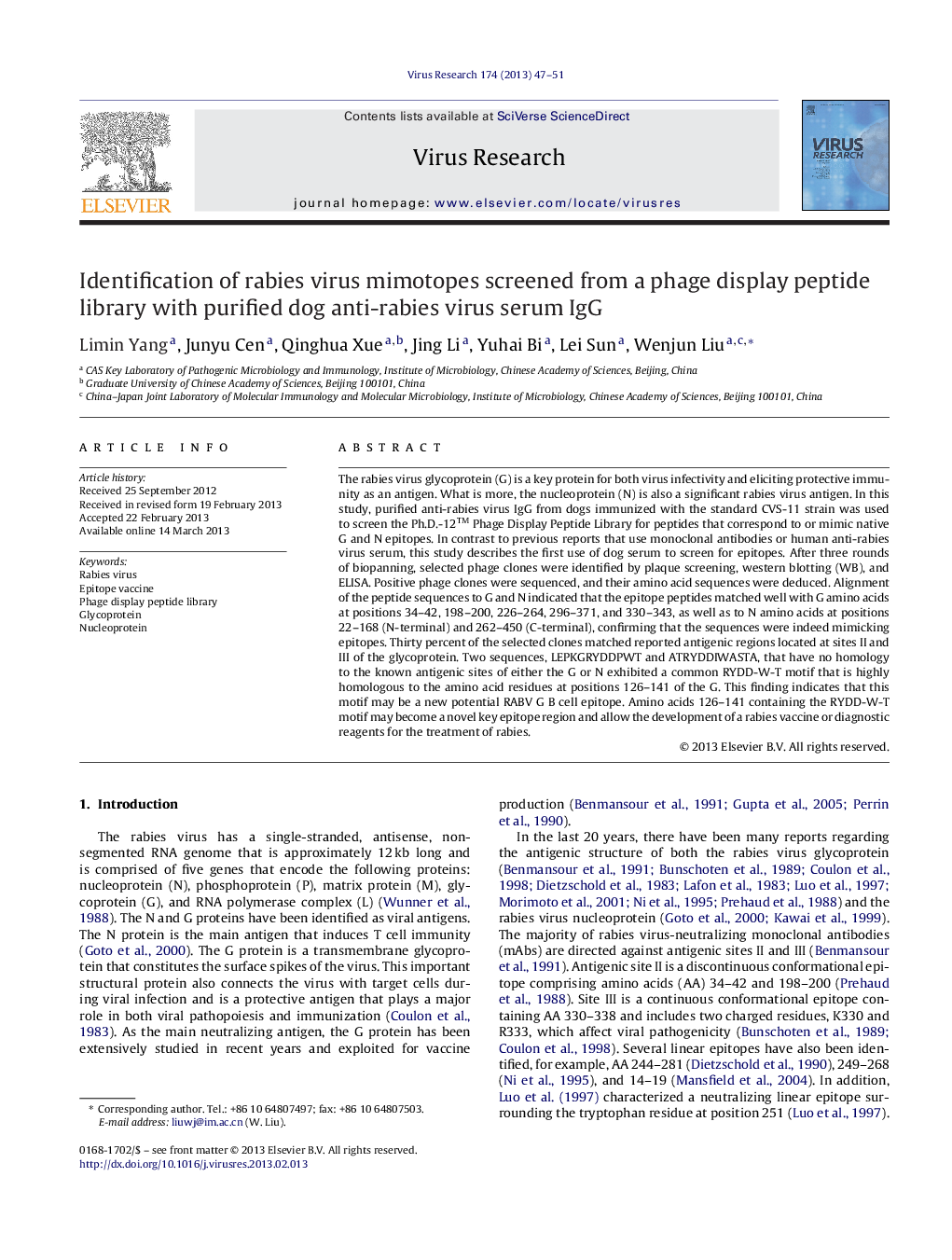| Article ID | Journal | Published Year | Pages | File Type |
|---|---|---|---|---|
| 3428589 | Virus Research | 2013 | 5 Pages |
The rabies virus glycoprotein (G) is a key protein for both virus infectivity and eliciting protective immunity as an antigen. What is more, the nucleoprotein (N) is also a significant rabies virus antigen. In this study, purified anti-rabies virus IgG from dogs immunized with the standard CVS-11 strain was used to screen the Ph.D.-12™ Phage Display Peptide Library for peptides that correspond to or mimic native G and N epitopes. In contrast to previous reports that use monoclonal antibodies or human anti-rabies virus serum, this study describes the first use of dog serum to screen for epitopes. After three rounds of biopanning, selected phage clones were identified by plaque screening, western blotting (WB), and ELISA. Positive phage clones were sequenced, and their amino acid sequences were deduced. Alignment of the peptide sequences to G and N indicated that the epitope peptides matched well with G amino acids at positions 34–42, 198–200, 226–264, 296–371, and 330–343, as well as to N amino acids at positions 22–168 (N-terminal) and 262–450 (C-terminal), confirming that the sequences were indeed mimicking epitopes. Thirty percent of the selected clones matched reported antigenic regions located at sites II and III of the glycoprotein. Two sequences, LEPKGRYDDPWT and ATRYDDIWASTA, that have no homology to the known antigenic sites of either the G or N exhibited a common RYDD-W-T motif that is highly homologous to the amino acid residues at positions 126–141 of the G. This finding indicates that this motif may be a new potential RABV G B cell epitope. Amino acids 126–141 containing the RYDD-W-T motif may become a novel key epitope region and allow the development of a rabies vaccine or diagnostic reagents for the treatment of rabies.
► We screened mimotopes from phage display libraries using dog anti-rabies virus serum IgG firstly. ► We discovered a novel antigenic site (126–141) in the glycoprotein of the rabies virus. ► We identified a common motif RYDD-W-T.
